At TrustPoint Hospital we believe education is an important first step in the effort to heal from psychotic disorders. Understanding the signs, symptoms, and effects of psychotic disorders can help you get the right type and level of care for yourself or a loved one.
Understanding Psychotic Disorders
Learn about psychotic disorders
When an individual is grappling with a psychotic disorder, that person is likely to experience a variety of psychological disturbances that can make healthy functioning extremely difficult. Delusions, hallucinations, disorganized speech and thinking, and diminished physical movements can all make even the simplest of tasks huge obstacles for even the strongest-willed person.
According to the fifth edition of the Diagnostic and Statistical Manual of Mental Disorders (DSM-5), the following are but a few types of psychotic disorders that an individual can suffer from:
Delusional disorder is an appropriate diagnosis for someone who holds true to fixed beliefs that can be proven as false with evidence. When diagnosed with this condition, it can be determined if the person is battling one or more of the following subtypes of this illness:
- The erotomanic type causes a person to believe that others are in love with him or her.
- The persecutory type is appropriate when an individual feels as though he or she is being plotted against for another person’s or entity’s gains.
- The grandiose type is applicable when an individual perceives that he or she possess some sort of talent or exceptional ability.
- The somatic type causes a person to believe that certain bodily sensations or functions are occurring.
- The jealous type is given to someone who is firm in the belief that his or her significant other is not being faithful.
Schizophrenia is a mental illness that is characterized by the presence of psychotic symptoms that last for at least one month but remain ongoing for at least six months. When a person is suffering from this disorder it can be all but impossible to function in an appropriate manner on a day-to-day basis without the aid of psychotropic medication and healthy skills of daily living.
Schizoaffective disorder includes both episodes of psychosis and mood disturbances that can resemble bipolar disorder. Given the drastic shifts in mood and the inability to decipher what is real and what is not when psychotic symptoms are present, the ability to go about one’s day can be rife with hindrances. Additionally, and because this condition is complex in nature, it is important for a person to receive a thorough assessment from a mental health professional in order to determine if this illness is what a person is suffering from.
When any of the above illnesses are impacting a person’s like, it is imperative that treatment for psychotic disorders be sought. Through effective interventions and medications, an individual can regain control of his or her life once and for all.
Statistics
Psychotic disorder statistics
With regards to delusional disorder, the DSM-5 states that the lifetime prevalence of the disorder is .02%, with the persecutory type being the most frequently diagnosed of all the types mentioned above. In terms of schizophrenia, both males and females are said to be equally affected by this illness, though males are more likely to grapple with symptoms for a longer duration of time than are females. Lastly, the risk of suicide is said to be higher among those who are suffering from a psychotic disorder. In fact, the rate of suicide among those who are battling schizoaffective disorder is approximately 5%.
Causes and Risk Factors
Causes and risk factors for psychotic disorders
There are a variety of causes and potential risk factors that can increase a person’s chances of developing a psychotic disorder. The following causes and list of risk factors are those that experts in the field of mental health believe are the main reasons why some suffer from psychotic disorders while others do not:
Genetic: Research has proven that there is a strong genetic link between one’s genetic history and the onset of psychotic symptoms. For example, if an individual possesses a family history of such conditions, that person is more likely to also suffer from a psychotic disorder at some point in life. Additionally, if an individual has a family history of bipolar disorder, depression, or autism spectrum disorder, there is an increased risk for developing a psychotic disorder as well.
Environmental: According to the DSM-5, there are numerous environmental factors that can influence whether or not a psychotic disorder will affect an individual’s life. The time of year during which a person is born, exposure to certain toxins or illnesses while in utero, or having been raised in an urban area can all influence the onset of psychotic symptoms.
Risk Factors:
- Family history of psychotic disorders or other mental illnesses
- Being born during the late winter or early spring
- Exposure to malnourishment, stress, toxins, or viruses while in utero
- Growing up in an urban environment
Signs and Symptoms
Signs and symptoms of psychotic disorders
There are a variety of symptoms that could suggest a person is struggling with a psychotic disorder. Therefore, if you feel that you or someone you care about is suffering from such an illness, it could be helpful to note the presence of the following and consider seeking treatment:
Positive symptoms involve behaviors or thoughts that are only displayed and experienced by those grappling with psychotic disorders. These symptoms are considered “positive” because they occur in addition to healthy behaviors that others experience, and are psychotic in nature. Positive symptoms can include:
- Delusions, or fixated belief systems, that can be proven false with evidence
- Hallucinations are experiences that involve hearing, seeing, or experiencing things that are not real
- Disorganized speech can sound like “word salad” and is often not well-understood by others
- Disorganized behaviors are actions or movements that do not seem to have a purpose or make sense to others
Negative symptoms include behaviors or actions that the individual is not able to perform or carry out due to the presence of a psychotic disorder. These symptoms can include, but are not limited to, the following:
- Anhedonia, or the inability to experience joy or pleasure
- Flat affect, or decreased facial expression
- Poor hygiene
- Alogia, or weak / poor speech
- Catatonia
- Poor articulation of thoughts and ideas
- Avolition, or decreased motivation for carrying out important tasks
Cognitive symptoms are typically experienced in the mind of the person suffering from a psychotic disorder and can include the following:
- Memory difficulties
- Hindered executive functioning
- Poor concentration
Depending upon the type of psychotic disorder that an individual is battling, the symptoms experienced can vary. For this reason, it is important for a person to seek the assistance and expertise of a qualified mental health professional within a reputable treatment program that cares for those with psychotic disorders.
Effects
Effects of psychotic disorders
Because the symptoms of psychotic disorders can be severe, especially when they are not treated, a person can be vulnerable to experiencing a whole host of negative effects. The following adversities are examples of those that may occur in the event an individual does not receive care for a psychotic disorder:
- Difficulty forming relationships with others
- Suicide attempts
- Inability to acquire or maintain gainful employment
- Financial strain
- Social isolation
- Worsening of psychotic symptoms
- Development of additional mental illnesses
- Homelessness
- Severe emotional and behavioral disturbances
- Difficulties with language
- Self-harm
- Suicidal ideation
- Substance abuse, addiction, or chemical dependency
Co-Occurring Disorders
Psychotic disorders and co-occurring disorders
The likelihood that a person will suffer from additional mental health concerns at the same time as a psychotic disorder is high. Among the various types of disorders that a person can be diagnosed with at the same time as a psychotic disorder, the following are the most common:
- Tobacco use disorder and other substance use disorders
- Anxiety disorders, including panic disorder
- Obsessive-compulsive disorder






